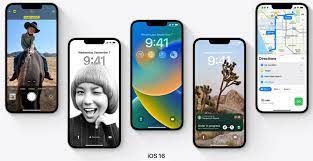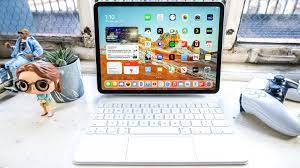Any iOS review, including this iOS 16 review, concentrates on two questions — when should I update and what can I expect when I do?
We picked “when” not “if” there for a reason. iPhone owners nearly always jump to the latest version of Apple’s mobile software because unlike our Android friends, we’re not at the mercy of phone makers and carriers as to when we can upgrade. When Apple makes an iOS update available, it’s available for everyone. The adoption rate for iOS 15, the last big iOS update, was approaching 90% in June, for example, At the same time, Android 11 was running on nearly 32% of Android devices, with the newer Android 12 only available on a little more than 17.5% of those phones.
But iPhone users don’t always upgrade right away. Sometimes, it makes sense to wait for a patch or two to make sure there aren’t any show-stopping bugs or big hits to battery life. The question for iOS 16 then, now that Apple has made the full release available, is whether the software is truly ready for a smooth upgrade.
Let’s remove all the suspense — I switched to iOS 16 on my full-time phone a few weeks ago, while the software is still in beta. And while I’ve noticed a hiccup here or there, the features that iOS 16 adds are well worth it to me. You may still feel like waiting to upgrade, and I applaud your sense of caution. But I think iOS 16 is ready to install on your phone — more importantly, I think you’re going to be pleased when you do install it.
And that gets to our second question: What should you expect from iOS 16? As this iOS 16 review details, the update introduces some new features and welcome updates to old favorites that will make your phone a lot more useful.
You can find the iOS 16 update by heading to the Settings app and tapping General. Select Software Update, and then follow the instructions for downloading and installing iOS 16. (Before you do, it’s a good idea to back up your iPhone with an archived backup.) Our guide on how to download iOS 16 can walk you through the process.
To install iOS 16, you’ll need an iPhone 8 or later. That covers any iPhone released in 2017 and beyond. That eliminates a few devices capable of running iOS 15 but left out in the cold with iOS 16. All iPhone 6s and iPhone 7 models can’t upgrade to iOS 16, nor can the original iPhone SE. (The 2020 and 2022 versions of the SE are supported, however.) The 7th-gen iPod touch is also on the outside looking in.
Even if your phone supports iOS 16, older phones may miss out on some features. As with iOS 15, you’ll need a phone with an A12 Bionic processor or later to use features like Live Text and Visual Look Up, both of which see new features in iOS 16.
Easily the biggest change to iOS 16 can be seen when you wake the phone from sleep. (Or if you’ve got one of the new iPhone 14 Pro models that feature always-on displays, at any time.) The iOS 16 lock screen is now customizable beyond just the wallpaper. You can alter the font and color of the date and time display while also adding widgets.
The ability to customize your lock screen may be old hat for Android users, but it’s a brave new world if you prefer the iPhone. As before you can go with one of Apple’s supplied wallpapers or use one of your own photos — iOS 16 even suggests photos that are particularly well-suited for lock screen wallpapers from your photo library.
You can pick from eight different fonts and a multitude of colors, though I’ve sometimes found it a challenge when using one of my photos to also find the right color contrast so that date, time and widgets are all equally visible.
As for those widgets, your choices during the iOS 16 beta process have been limited to Apple’s own offerings. With iOS 16 now out, expect app makers to rush out their own widgets offering glanceable information you can see with just a look at your iPhone display.
There’s space for a single widget alongside the date, but I find this space too small to include anything more than a widget showing the current temperature. The area right below the time offers more space — enough for four square widgets, two larger ones or a mix and match of the two sizes.
Top widget options at the moment include a calendar widget showing upcoming appointments, a widget that controls smart home devices via the Home app, a stock ticker, a News headline widget and one that shows you your progress in iOS 16’s new Fitness app. I find a Clock widget that tells me if I’ve got an alarm set particularly helpful for reminding me to set my alarm before I turn in for the night — especially since I can tap the widget to turn on an alarm without out having to unlock the phone and launch the clock app on my own.
To make space for all these widgets, notifications now appear at the bottom of the screen, a change I’ve gotten used to in no time. By default, notifications are stacked on top of each other, and fan out when you tap them, though you can revert to the old list view showing all notifications. A new notifications option also shows just the number of notifications that have come in for any minimalists out there. (Tapping the number expands the notifications so that you can view them.)
Customizing the lock screen is pretty simple if you go through the Wallpaper section of the Settings app or press and hold on the lock screen to bring up customization options. iOS 16 guides you through the process, and it’s pretty clear how to adjust fonts, colors and widgets. Customizing the home screen wallpaper is a little less straightforward. By default, the same photo or design you’ve selected as your lock screen background will appear on your home screen, but you can use a blur effect on that photo or replace it with a solid color or gradient if you prefer. You can also select another photo if the one on your lock screen isn’t well suited to let you see app icons and widgets on your home screen.
You can create multiple lock screens and switch between them at will, though instructions for doing so can only be found in the Wallpaper section of Settings. When your lock screen is active, just tap and hold on the photo — an array of the lock screens you’ve created will fan out and you can tap the one you want. There’s also options for editing the current lock screen or creating a new one. If you’re tired of a particular lock screen, just swipe up to reveal a delete button.
In a nice touch, you can tie a particular lock screen to a Focus mode to further lock out distractions when you want to buckle down and work (or conversely, if you don’t want work distractions interrupting your free time). That way, you can turn on a Focus mMode just by switching lock screens — when you unlock your phone, you’ll go to the home page with the apps and widgets tied to that particular Focus mode.
Minor frustrations aside, iOS 16’s customizable lock screen is a welcome addition to the iPhone. It allows you to personalize your phone’s look in a productive, useful way, and getting the hang of creating a lock screen takes no time at all. The imminent addition of third-party widgets should add even more variety to the mix.










